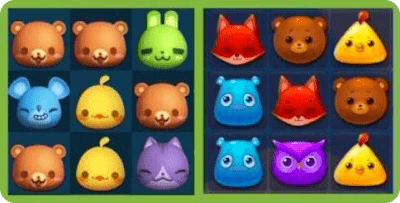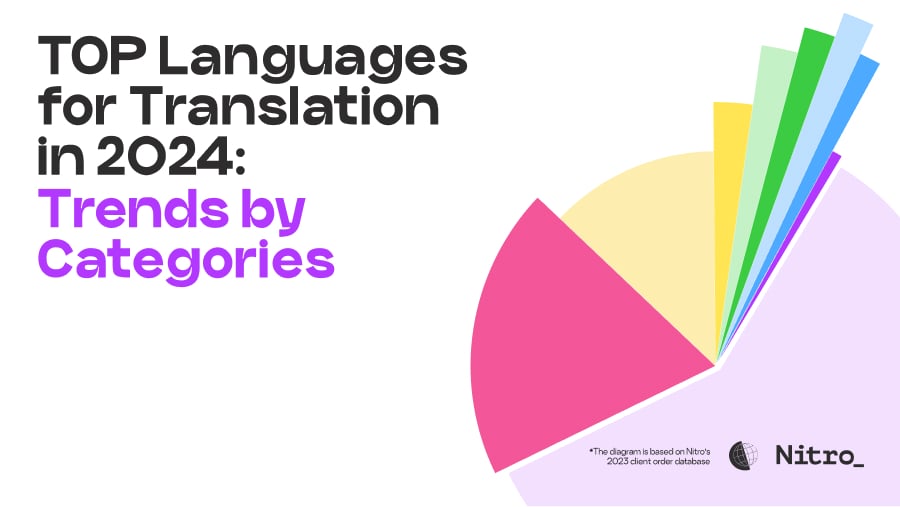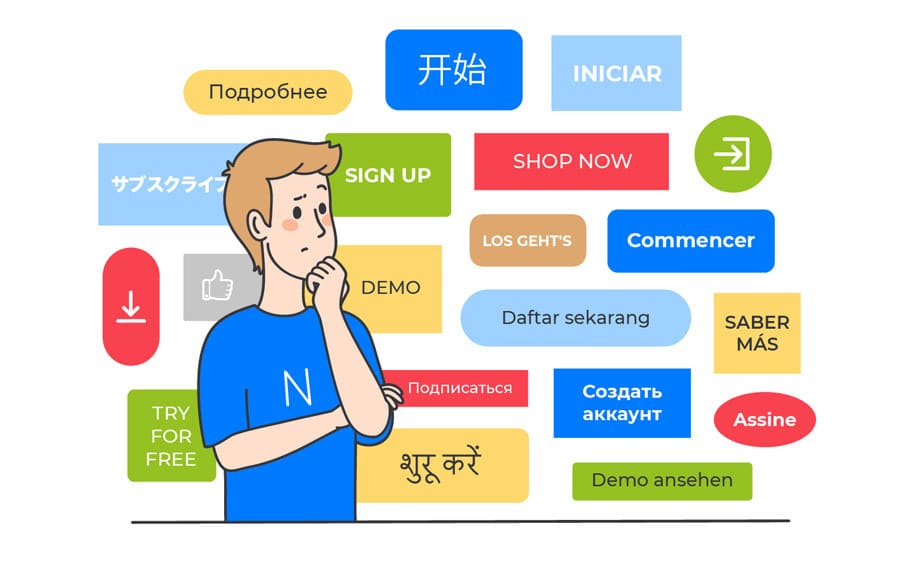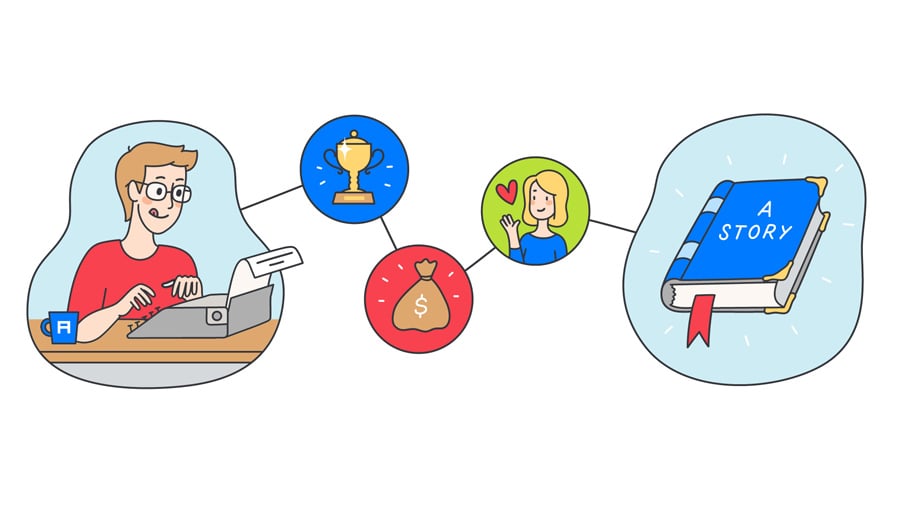This article is based on the Alconost presentation at the WN China 2021 event.
The Chinese gaming market is already saturated, so it’s no surprise that Chinese gaming companies have started going global. As Zhang Yiming of ByteDance said, “China is home to only one fifth of the world’s internet users. Going global is a must.”
Going global is a logical move for any up-and-coming company, but the cultural gap and language differences can make your international launch seem rather daunting.
Here at game localization company Alconost, we would like to share with you the best practices for bringing your Chinese game to Western markets. In this article we’ll discuss what challenges you’re likely to encounter and the most effective ways to meet them.

Where to begin
A common practice is to start off by translating marketing creatives to evaluate traffic. This approach means translating the app store descriptions (or Steam page) and screenshot text for the markets you want to target.
In most cases, game developers target countries with the most potential – English-speaking countries, Germany, Russia, Brazil, etc. You can find the full list in our article on the Top 10 Languages for Game Localization.
There is no need to test English-speaking countries, as English is the first logical step in any game localization. But if you plan to localize your game into other Western languages, it’s a good idea to test the waters first and check how a localized store description affects traffic.
Once you see interest from certain markets, you can proceed with full textual localization of your game. And this is where the challenges begin.
Common challenges when localizing from Chinese
Alconost has published many articles about preparing your game for localization and dealing with localization pitfalls, but such articles usually focus on localizing from English into other languages.
This time, we would like to address the intricacies of game localization specifically from Chinese into English and other languages. We have defined five main challenges and ways to overcome them.
Challenge #1: Chinese grammar demands context
In the world of game localization, context is king. By context we mean providing translators with item descriptions, screenshots, style guides, and glossaries.
Why is context so important? Languages have different grammatical structures, which often makes it hard to pick the proper translation without some background information. This is where context comes in.
Without context, problems may arise involving:
- gender
- word forms (singular/plural, declension endings)
- incorrect word usage (is it an item, a skill, or a button?)
Here’s a quick example: in one game the plot involved gods from Western and Chinese mythology. As there was no context explaining the genders, in the translation some gods ended up in homosexual marriages.
This was not intentional – just the result of missing context. Usually this happens when developers just send an Excel spreadsheet containing isolated words and phrases, with no additional context.
So context is not just important – it’s crucial. Remember that since Chinese grammar is quite simple in structure, a phrase without context may not provide sufficient information to translate it correctly.
Word forms and endings can become a problem, as well. Let’s take the phrase 你找到了 300 金币。 Most likely, the translator would receive it in this form: 你找到了$AMOUNT$金币。
In Chinese, the text will be 金币 whether it is 1 coin or 300 coins. But in Russian, for example, there can be 3 different forms for the word 金币, depending on whether you say 1 coin, 2 coins, or 10 coins. Without knowing how many 金币 is meant by $AMOUNT$, the translator won’t be able to produce an accurate translation.
Challenge #2: The Ambiguous nature of Chinese characters
Chinese is a rich language, and each Chinese character has multiple meanings. This means that the names of things like weapons, spells, and power-ups are tricky to translate without additional context (screenshots or descriptions of the skill/item). A literal translation from Chinese to English won’t do: it will simply sound awkward and unnatural.
Skills names are often based on chengyu (成语), and while literal translations may sound beautiful, it will be hard to understand what the skill actually does. Besides, while chengyu are just 4 characters long in Chinese, in English they result in really long phrases.
Take this chengyu for example — 背水一战。It literally means “to fight with one’s back to the river.” The English literal translation is too long, and it’s not exactly clear what it means.
Western players have no clue as to the origin of this phrase (the battle of Jingxing, where the “fighting with one’s back to the river” strategy was used to win the battle), so the literal translation of 背水一战 won’t make much sense to them.
In this particular case, fortunately, the translator managed to come up with a concise, understandable English equivalent: “Last Stand.”
Game titles and names of monsters also require a creative approach. Here are some examples:
- For the game 烈火战马 (literally “War Horse(s) in the Raging Fire”), a literal translation of the title wouldn’t have cut it for Western players, so the translator came up with a more Western-sounding version: “Iron Conflict.”
- For names of monsters such as 野兽 (“wild beast”) or 凶兽 (“fierce beast”), literal translations will sound dull and unimaginative in English. But if the translators are provided with images of these monsters (context again!), they’ll be able to come up with some fun names.
Challenge #3: Problems with the UI
Chinese characters are concise, which lets you cram a lot of info onto the screen. But 2-3 Chinese characters may turn into 20 characters in European languages!
Hence yet another typical problem: the translation doesn’t fit. For example, take the common gaming term 战力 or 战斗力. In an attempt to make the translation shorter, translators often go with Might/BP (Battle Power).
English is probably the most compact of the European languages. Other Western languages can be even more challenging: words in Spanish, German, and Russian can be 25-30% longer than their English counterparts!
Take a look at these screenshots: most Chinese words only require 2-3 characters, while their English and Russian equivalents are much longer. In Russian translators have even had to adopt the English abbreviation “XP,” as no such short abbreviation exists in Russian.

Consequently, when localizing your game from Chinese (or from English, for that matter) it’s important to make the interfaces scalable, leaving room for longer words in other languages.
Challenge #4: Culture-heavy content
Games that take place in China-specific settings are tricky to localize because they usually have lots of references to Chinese culture — the Three Kingdoms, Journey to the West, Chinese mythology and traditional medicine, etc.
These kinds of games are designed for Chinese gamers who normally know some classical Chinese and enjoy in-game references to their rich history and culture. But Western gamers are generally unfamiliar with China’s 5000 year-long history and cultural concepts.

This in turn poses a range of translation dilemmas. How do you translate...
- ...historical names and mythological concepts without being wordy?
- ...ancient Chinese poetry, which Western players don’t expect to see in a game?
- ...dozens of ingredients from traditional Chinese medicine — again, unfamiliar territory for your Western players?
Let’s take a look at some examples of how these issues have been resolved.
In the game Forsaken World (神 魔 大 陆) there was a series of quests that relied heavily on background knowledge of Buddhism and mythology. For the Russian localization, the developers chose to remove these quests and replace them with a different set of quests that were easier for Russian gamers to understand.
In another game there were 4 deities – Azure Dragon, Black Tortoise, Vermilion Bird, and White Tiger – who constantly appeared in the game. These references would have been totally lost on Western players, so the developers ended up simplifying the system.
A similar dilemma involves Chinese names. Normally if a game is based on Chinese history and culture, the names are simply transliterated (in pinyin), while in fantasy settings the names might be replaced with suitable Western-sounding names. For example, in the steampunk game Black Gold certain names were replaced with dwarf names, as this dovetailed nicely with the theme.
Challenge #5: Cultural differences
You may also encounter some unexpected difficulties surrounding different cultural interpretations and sensitive topics. This means that certain visuals and plot twists may need to be tweaked.
Let’s consider some real-life examples.
In the Russian localization of one Chinese game there was a Mother’s Day event, for which players were supposed to collect flowers. The problem was that the number of flowers was even, and in Russian-speaking countries an even number of flowers is reserved for death, grieving, and funerals.

In another game, swastikas were used on flags, which Europeans would naturally find disturbing. In that game it was the Buddhist swastika, not the Nazi swastika (they actually look a bit different), but the resemblance was too close for comfort. Fortunately this was noticed during alpha testing, and the swastika symbol was removed.
There are other sensitive topics, as well. In some games you may see scantily clad girls who almost look underaged, such as certain Japanese female manga characters. You should be aware that this is not acceptable in the West and the game will get blocked.
Another factor that may cause you trouble is copyright issues. You cannot use trademarked characters and heroes from Western popular culture. An early version of one game included Spiderman and Hawkeye, but the translators noticed it and wisely advised redesigning and renaming the characters.
When it comes to visual style, the tastes of Asian and Western gamers differ considerably, so sometimes it makes sense to redesign the appearance to make it more appealing to a Western audience.
Also, Chinese interfaces often look too busy and complex to Westerners, so you may want to create a cleaner, more spacious interface for your global launch.


The top picture: visual style adapted to Western gamers. The bottom picture: the same game with cute visual style for the Chinese gamers.
Rising to the challenge
At Alconost, here’s how we recommend that you tackle these challenges:
1) Create a “Westernized” master text in English.
Many gaming companies prefer to create games in Chinese, then localize them into English and use the English version as the source language for subsequent localizations.
This helps to solve multiple problems:
- By creating this kind of Westernized source material, you won’t have to adapt Chinese concepts each time for other European languages
- You’ll encounter fewer context-related issues, as English grammatical structure is less ambiguous
- It will be much easier to find great translators who specialize in game localization
2) Provide the translators with plenty of context. Additional context helps avoid embarrassing mistakes and misleading translations.
3) Make the interfaces scalable so that localized strings don’t get cut off.
4) Only use translators with expertise in the game industry.
This is even more important with Chinese, because games based on Chinese mythology often require an understanding of classical Chinese (wenyanwen). Naturally, a translator who only works with texts from, say, the legal field or the oil industry will have little to no knowledge of classical Chinese.
5) For games that require a lot of background knowledge, either simplify the system for Western players or include a knowledge base in the game so that players have reference material to help fill in the gaps.
Successful Chinese games localized into other languages
More and more Chinese games are blowing up the Steam and App Store charts.
Chinese mobile games
Popular mobile games are often translated into 10-15 languages. This is the strategy of companies such as tap4fun and Lilith Games, whose most successful games have reached over 10 million downloads each.
It’s worth pointing out that Lilith Games has an interesting approach: they release their games overseas first, on a large scale — and naturally these games are adapted for Western audiences right from the start — and only then release the games on the home market.
Chinese Steam games

There is a growing number of extremely popular Chinese games on Steam — even some that are only available in Chinese, such as indie games The Scroll of Taiwu (太吾绘卷") and Tale of Immortal (鬼谷 八荒). The store pages for these games are in English.
Already there are numerous English-language reviews praising the game and asking for an English version. Each game has already sold over 1 million copies. By the way, the Tale of Immortal (鬼谷 八荒) team has announced that they are adding an English version.
Imagine how popular these games will become with a quality English translation! When Gujian 3 (古剑奇谭三) was released in English, sales quadrupled, skyrocketing from 280,000 to 1.3 million copies sold.
A solid investment
You can see from the previous examples that localizing your game is a great way of attracting users from all over the world, and consequently increasing your ROI.
Localization into Western languages means not only an expanded user base, but also much better retention. Unlike Chinese gamers, who tend to abandon games quickly, Western players will often play a game they like for 2 years or more.
Better retention means higher LTV, so making your game accessible to foreign users is truly a worthwhile investment.
Here at Alconost we’re excited about the growing Chinese gaming industry. We hope this article will inspire you to localize your game into English and other Western languages and become recognized by Western gamers.
We wish you good luck with your global launch!
Planning to localize your game?













